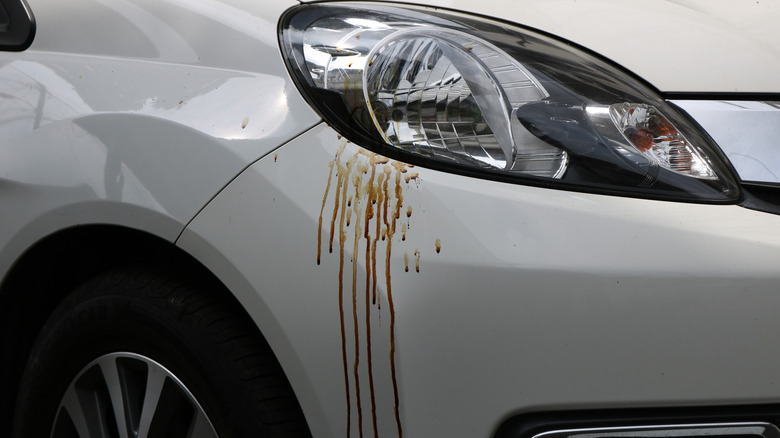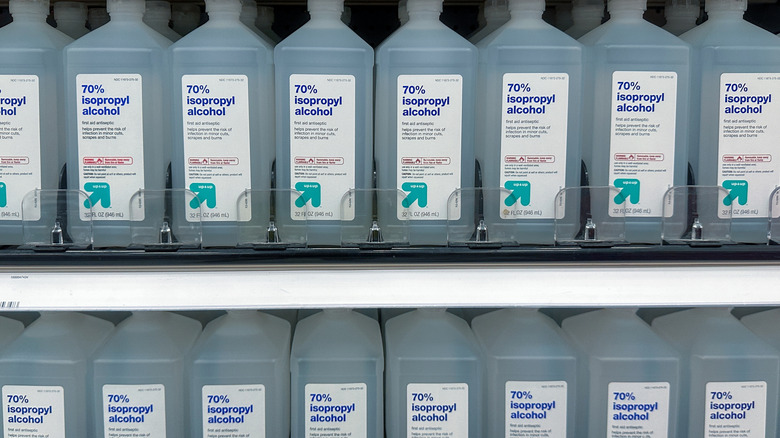The Cleaning Essential That Easily Removes Sticky Tree Sap Spots
Tree sap spots are sticky, smelly, and stubborn, and the unsightly brownish drips can absolutely ruin the look of your car, house, porch, or outdoor furniture. Even worse, tree sap can attract bugs and damage paint when left too long. Cleaning sticky substances is often a pain, but with the right tools, it can be done fairly easily. One substance that can help you clean tree sap off of vinyl siding and nearly any other surface is isopropyl alcohol. As a solvent, isopropyl alcohol breaks down tree sap, changing the consistency and stickiness to make it easier to wipe away, even if the sap has hardened.
While it is a versatile cleaning solution, there are some common things you should never clean with rubbing alcohol to avoid damage. Wood stains, leather, paint, and some types of plastic can all be compromised by isopropyl alcohol. Make sure you know what material you are working with and take steps like diluting the alcohol and performing a patch test so that your cleaning attempt doesn't leave your things looking even worse than when they were covered in sap.
If you are ready to get rid of some tree sap spots, you will need isopropyl alcohol, gentle soap, a microfiber cloth or some cotton balls, and water. Isopropyl alcohol comes in a range of concentrations, but a 70% solution is a good starting point for cleaning projects. You may need to dilute it by adding water, depending on the durability of the item you are cleaning, so make sure you have a bowl, bucket, or spray bottle to mix the alcohol and water solution.
How to use isopropyl alcohol to remove tree sap spots
Before you begin, you may also need to find a better location for your cleaning project. If the sap is on your house, you will obviously need to clean it in place, but for furniture, cars, and other items, you should move it away from the offending tree to an area out of direct sunlight, such as a garage, to prevent your alcohol from drying up too quickly, making the tree sap less easier to work with.
Once you have your supplies and are in a good location, you can get started. First, use mild soap and warm water to wash the area around the sap. Next, create your diluted sap-removal solution using equal parts isopropyl alcohol and water. Apply a small amount of solution to your microfiber cloth or cotton ball, and press and hold it to the sap spot for 30 seconds to allow the solvent to reduce the stickiness. Gently wipe the sap off in a circular motion, avoiding pushing too hard to minimize potential damage from the alcohol. If the sap does not come off, you can try alternative methods like using vegetable oil or white vinegar (depending on the surface type), repeating the process by applying more pressure, but these could increase the likelihood of causing damage.
Once you are done, wash the area again using mild soap and water to ensure all of the rubbing alcohol is removed. Finally, after dealing with such a messy, sticky situation, you may need to know how to remove sticky tree sap from clothes, too.

